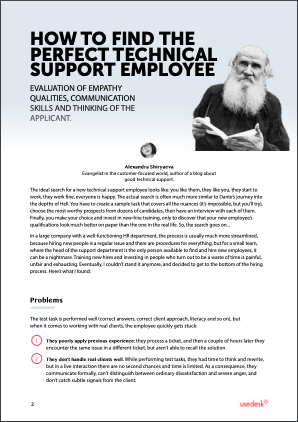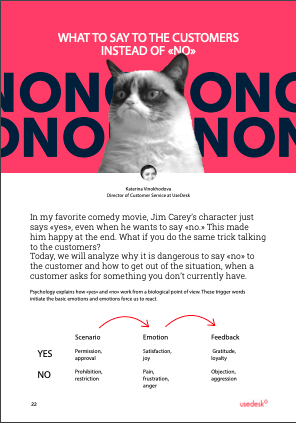Request a Demo
Send us a request for an online demonstration at the time that's convenient for you. We will give you an overview and answer any questions you may have about the system.
By clicking the button, you agree that you have read our Privacy Policy
CONTROL YOUR RESPONSE TIME WITH SLA
It's time to make some tea and get comfortable - today, I'll tell you in detail how to bring your support team to a single standard by using SLA.
A graph showing the ratio of completed to overdue SLA metrics
A bit of theory
SLA (Service Level Agreement) is a service level agreement. This term can often be heard in telecommunications and IT and e-mail services in any sphere - in today's business environment, the competition is so high that the client has the right to demand a specific timeframe of response to the request. That's why SLA compliance is one of the primary key performance indicators (KPIs)
Also, SLA can be used internally to control the team's timely response, depending, for example, on the category of the request. Each appeal is assigned a priority.
In Usedesk, you can now create a time frame that obligates the team to respond on time:
Also, SLA can be used internally to control the team's timely response, depending, for example, on the category of the request. Each appeal is assigned a priority.
In Usedesk, you can now create a time frame that obligates the team to respond on time:
In 2017, we are planning to add additional fields to the Usdesk, which allow you to create flexible SLA settings based on the category of treatment, the complaint's presence, etc.
Katerina Vinokhodova
Usedesk co-founder
Moving on to the settings
Enable SLA in the settings in the "Integration" section:
There are three available metrics: first response time, next response time, and time to completion. You can use three SLA metrics at once, or you can use only one. If your support is not 24/7, enable the metrics according to the company working hours.
Then we set up the rules. There are several options: for example, determining the category of the request by keywords or adding the required tag to the request by yourself.
Suppose a support team member needs additional information from the client to solve the problem. In that case, you can use the "Pending" status - a request in this status has all the SLA metrics suspended, and in case of reopening by the client is recalculated - from the client's last comment.
Setting option with the manual tag adding
Setting option with recognition of key phrases of the request
Now the request will display the time in which the employee must give an answer and solve the client's problem
Guarantee customers quick problem resolution with a service level agreement


We have added a column with two metrics to the main query table in SLA (the bar with the first response metric after execution changes to the next response metric if it is enabled in the settings, the second bar is the time to execution): now the employee will not miss a request that requires an immediate response. The column is sorted by ascending or descending metric of the first/next response. If your team is not working 24/7, an employee can simply click on the column and respond to more urgent requests in the morning after the weekend.
The SLA filter allows you to quickly assess the situation in case of an unexpected "blockage" and immediately switch to processing requests for the right metric.
The SLA filter allows you to quickly assess the situation in case of an unexpected "blockage" and immediately switch to processing requests for the right metric.
SLA in the request list
The SLA filter allows you to quickly assess the situation in case of an unforeseen "blockage" and immediately switch to processing requests by the desired metric.
SLA Filter
Quality pending customer response, SLA suspended

Notifications before or after an SLA violation
The manager doesn't have to press F5 every five minutes and frantically search for "flushed" requests. It's enough to set up an email notification and warn the support staff member about a forgotten email if he/she suddenly decides to sneak out of the office 15 minutes before the end of the working day :)
If there are too many potential delinquencies, talk to your team: perhaps current business processes prevent you from answering clients on time for some reason.
A rule that sends a notice of SLA delinquency
SLA reports
In the SLA report, consider the most important and necessary: the number of metrics completed and overdue in the form of a clear graph (at the beginning of the article) and a percentage. You can see the performance of an entire department, a specific employee, or an individual tag. The chart is clickable and shows a list of requests, which you can download in the desired format and conduct a "debriefing" at the meeting. The "time to completion" metric shows the lifecycle of a query without any pauses: from its creation to its final execution. After analyzing most of the requests according to this metric, you will be able to determine the optimal average figure for your problem-solving SLA policy.
Request pending customer response, SLA suspended
Bottom line
Usedesk has powerful functionality for building a unified standard of handling requests. With SLA, you can guarantee your customers answers on time, discipline, and even reward your team for meeting the targets. Contact us in your feedback - we will help you to understand the settings, and together, we will make your customer service more productive. Be sure to ask your customers if they've noticed any difference after a couple of months of SLA implementation - we're one hundred percent sure the answer will be positive.
Share with your colleagues:
Did you like this article?
Error get alias
We know a lot about customer service
Once every two weeks, we will send exciting and valuable materials about customer service - articles, cases, and system updates. Do you mind?







